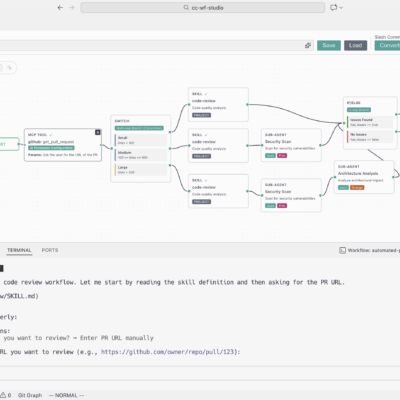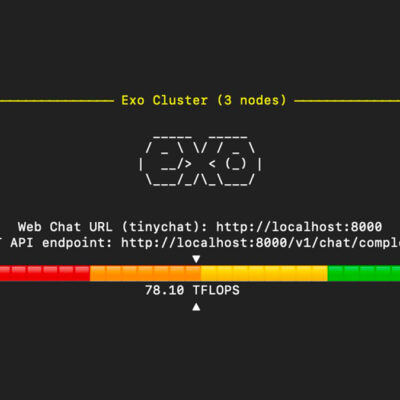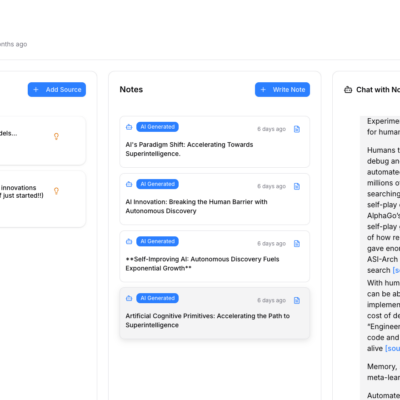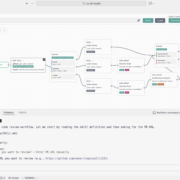Having automated countless processes, I can confidently say that building a multi-talented team of AI media agents with n8n is a game-changer. It grants you complete control over your entire digital content production and distribution pipeline. In this article, I’ll share my hands-on experience, practical insights, and crucial steps to build your own powerful media agent system. We’ll cover everything from creating and editing images and videos to posting on Google Drive, Email, TikTok, Instagram, and X—all fully automated.
If you’re a content creator, marketer, or automation enthusiast looking to level up your game, this is the comprehensive guide you can’t afford to miss.
Overview of the Ultimate n8n Media Agent System
My initial challenge was this: How can I create a smart “media assistant” that takes commands via Telegram, handles creative tasks, manages files, and posts to multiple platforms within a single, unified automation system? The answer was to architect a network of specialized media agents in n8n, each designed for a specific function, working in concert to deliver a seamless experience.
Based on my implementation, this system has several core capabilities:
- A Full-Fledged Personal Assistant: It seamlessly integrates with and controls essential tools like Gmail, Google Drive, Google Calendar, and even contacts stored in Airtable.
- AI-Powered Content Creation: The system can generate images from text, edit existing images based on prompts, create videos from scratch, and even transform static images into dynamic videos (VFX).
- Automated Social Media Publishing: It directly posts content to major social networks, including TikTok, Instagram, and X.
- Robust Logging and Auditing: Every action, including errors, is automatically logged in a Google Sheet, ensuring full transparency and making it easy to monitor performance.
All interactions—from giving commands to receiving final content—are handled through a single, convenient interface: Telegram.
The Core Workflow: From Command to Content Publication
After building and refining the workflows, I’ve identified an optimal four-stage operational sequence.
Download workflow: https://romhub.io/n8n/Ultimate_Media_Agent_Army1. Input Processing & Triage
Whether the user input is an image or text, the system first classifies and standardizes the data before routing it to the appropriate agent. Here’s how my system handles it:
- Image Messages: The workflow automatically downloads the image, uploads it to a designated Google Drive folder, and then informs the primary AI agent that a new file is available, providing its unique File ID.
- Text Messages: Text-based requests are sent directly to the main AI agent for natural language interpretation and processing.
This initial triage is critical. Properly standardizing the data (e.g., securing the File ID) ensures that all subsequent steps in the automation run smoothly and without errors.
2. AI-Powered Media Creation & Editing
This is where the Creative Agent shines, utilizing a suite of specialized tool workflows:
- Create Image Tool: It takes a text description and a desired filename, uses OpenAI’s DALL-E 3 model to generate the image, and then automatically saves it to Google Drive and sends it back to the user on Telegram.
- Edit Image Tool: The user provides the Google Drive File ID of the source image and a prompt describing the desired edits. The workflow fetches the image, sends it to OpenAI’s Edits API for processing, and delivers the newly edited version.
- Create Video & Image-to-Video Tools: With just a simple prompt, the agent triggers workflows that leverage Fal AI. The system continuously polls the API’s status until the video is rendered, then automatically delivers the final product via Telegram and archives it in Google Drive. My Image-to-Video tool even cleverly uses ImgBB as an intermediary to generate a public URL for the source image before processing.
TIP:
Building each task as a separate sub-workflow is far more effective for managing binary data, preventing failures, and allowing for easy customization. You can swap out AI models or add new capabilities with minimal effort.3. Automated Publishing, Sharing & Collaboration
One of the system’s most powerful features is the seamless coordination between agents to execute complex distribution tasks:
- Posting to TikTok, Instagram, & X: The user simply provides the File ID and a caption. The Posting Agent then calls the appropriate sub-workflow, which uses Blotato to fetch the file directly from Google Drive and publish it on the target platform.
- Sending Emails with Attachments: The Email Agent can look up contact details from Airtable, instruct the Google Drive Agent to find the correct file and set its sharing permissions, and then send the email to the right recipient.
- Creating Insight Summary Docs: The Web Agent can use tools like Apify to scrape data, then pass the findings to the Create Doc Tool, which compiles the information into a Google Doc and shares the link back to the user.
The key to this architecture is that each agent has a single, clear responsibility, allowing them to collaborate effectively thanks to a shared memory context and comprehensive logging.
4. Robust Logging, Auditing, and Error Handling
I always enable the return intermediate steps option on the main n8n agent. This allows me to capture a complete audit trail—timestamp, input, output, actions taken, token count, and AI model used—directly into a Google Sheet.
- If an error occurs in any sub-workflow, the system automatically routes to an error-handling branch. It logs the specific error details and notifies the user, rather than crashing the entire process.
- This log is invaluable not only for debugging but also for cost optimization, as it allows you to track token consumption and evaluate the cost-effectiveness of different AI models.
Architecting Your Agents: Best Practices for a Sustainable System
Through practical experience, I’ve found that a “manager-delegator” architecture is the most robust and scalable approach. A central Ultimate Media Agent acts as a manager, whose sole job is to choose and delegate tasks to the correct tool—it doesn’t perform the tasks itself.
My setup includes the following agents and tools:
- Specialized Agents: Google Drive Agent, Email Agent, Calendar Agent, Contact Agent, Social Media Agent, Creative Agent, Posting Agent, and a Web Agent.
- Utility Tools: A
Create Doc Tooland aThink Tool(which allows the agent to pause and reason about its next steps). - Dedicated Tool Workflows: All creative and posting tasks (e.g.,
Create Image,Instagram Post) are built as standalone workflows. This modular design makes it incredibly easy to update or replace a specific function without affecting the rest of the system.
I also focus heavily on optimizing data transfer prompts:
- For media: Pass all necessary parameters like source File ID, new filename, descriptive prompts, aspect ratio, and the user’s
chatIDto ensure the response is delivered correctly. - For posting: Pass the File ID and caption. The workflow should always verify public sharing permissions before uploading.
- For external APIs like Apify: Pre-configure static values like scraper IDs and only pass dynamic variables like search terms and result limits.
A pro-tip is to keep the inputs for each sub-tool as minimal as possible. This makes the workflows faster and more token-efficient.
Flexible AI Integration and Cost Optimization
Your choice of AI models directly impacts both performance and operational costs. Here’s my current stack:
- Main Agent: I use
gpt-5-minivia OpenRouter, which provides the flexibility to set a fallback model (like one from OpenAI) to ensure high availability. - Image & Video Generation: DALL-E 3 (via the
gpt-image-1API endpoint) offers excellent quality for image creation, while Fal AI (veo3/fast) provides a fantastic balance of speed and cost for video. - Social Media Scraping: Apify is my go-to, with pre-built “actors” that reliably scrape data from Instagram, YouTube, and TikTok.
Estimated Costs (subject to change):
- Images: A few cents per image, depending on quality.
- Video: Approximately $0.25-$0.40 per second of generated video.
- Blotato: Starts around $29/month (promo codes are often available).
- Apify: Offers a free tier and scalable paid plans (also with promo codes).
By clearly separating tasks from AI models, you can strategically invest in high-quality models for critical tasks while using more cost-effective options for routine jobs.
How to Deploy and Customize the Workflow in n8n
Here is my recommended process for setting up this system:
1. Prepare and Import the Workflows
- The complete system consists of nine workflows: one main “Ultimate Media Agent” orchestrator and eight dedicated tool workflows (for creating/editing media, posting, and creating documents).
- After downloading, import all JSON files into your n8n instance. Give each workflow a clear name to make linking them within the main agent’s tools straightforward.
2. Connect Agents, Customize Variables & APIs
- In the main workflow, re-link each
toolWorkflownode to the correct sub-workflow you just imported. - Create and configure your Credentials for all the services used: Google suite, OpenAI, Fal AI, Blotato, Apify, Airtable, Telegram, etc.
- Ensure the
chatIDvariable is passed correctly through all workflows that send a response back to Telegram. This is crucial for directing messages to the original user.
3. Test & Optimize with the Operations Log
- Run end-to-end tests for each major task: send an image, rename it, edit it, create a video from it, post it to three platforms, and request a summary doc.
- Monitor your Google Sheet log to identify bottlenecks or unexpected loops. Use these insights to refine the prompts and logic for each agent.
4. Personalize for Your Content Needs
- Change Creative Styles: Simply modify the system prompt within the Creative Agent to alter the style, theme, or tone of your generated images and videos.
- Add New Platforms: Add a new social media channel by creating a new posting workflow and linking it to the Posting Agent.
- Ensure Security: If your workflows handle sensitive information, double-check Google Drive sharing permissions and review the instructional sticky notes within the workflow for security best practices.
Conclusion: You’ve Built a Media Powerhouse
Building an optimal media agent system with n8n is no longer reserved for developers. You now have the blueprint to create a personalized, fully automated content machine at a reasonable cost, with limitless potential for expansion. From data management and creative design to multi-platform publishing and real-time reporting—it’s all automated, intuitive, and customizable to your unique vision.
I am confident that by following the steps in this guide, you will quickly master your own media agent system on n8n, elevating your personal or organizational media power to a whole new level.








